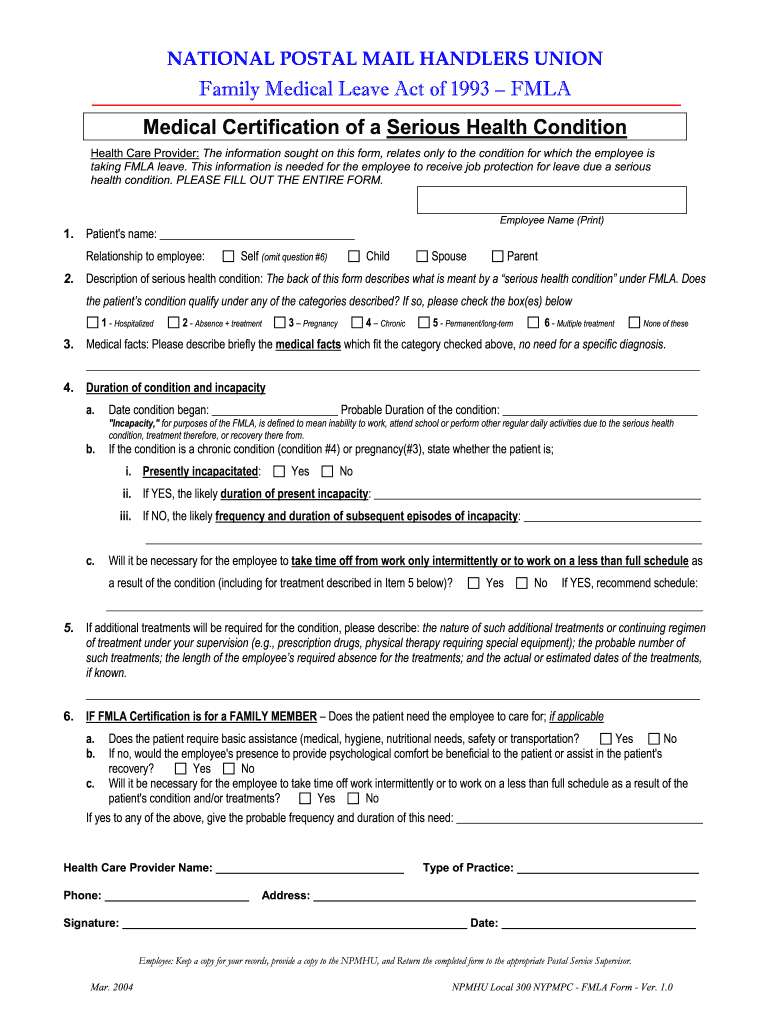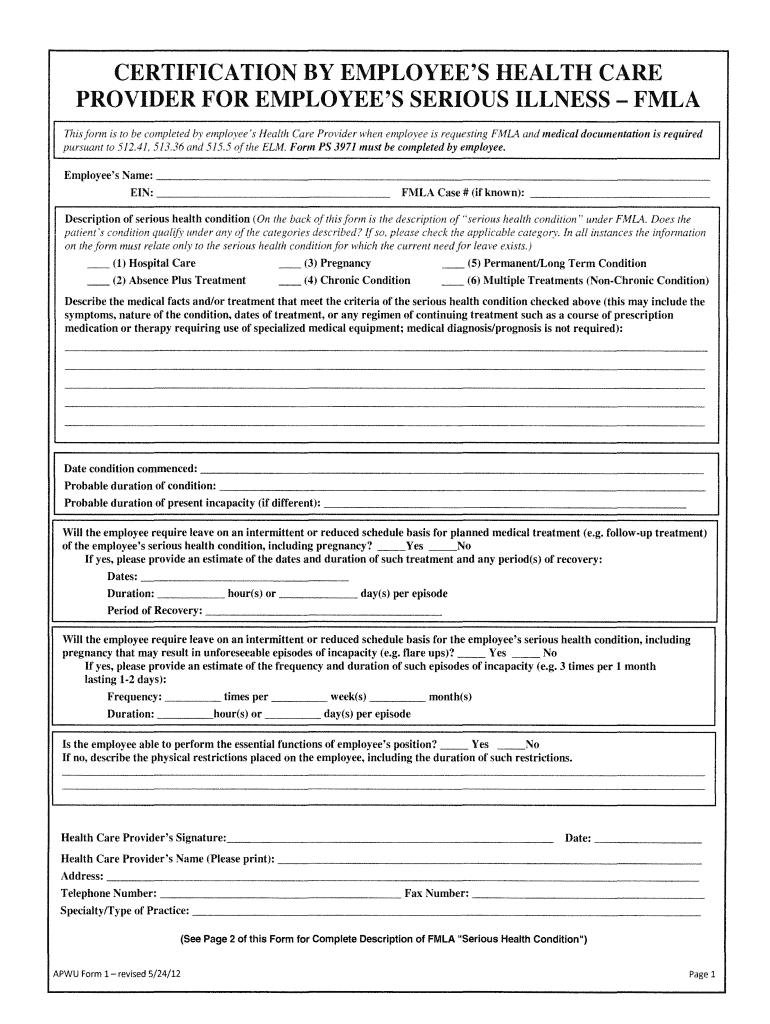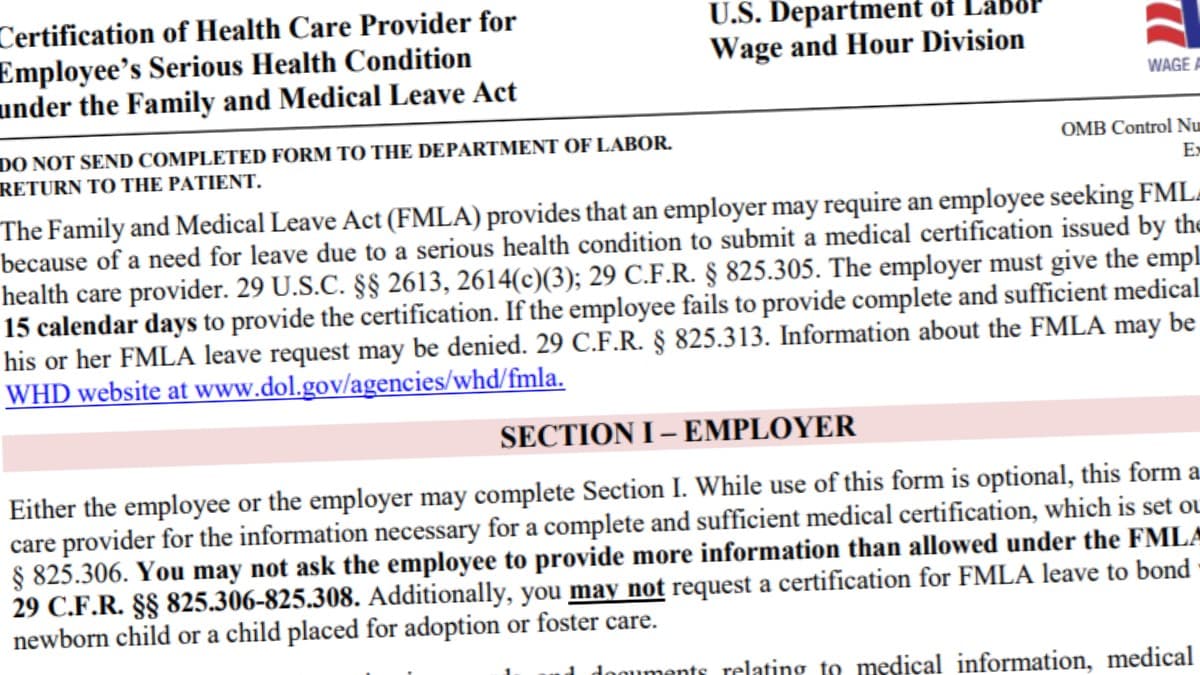How to Obtain FMLA Paperwork for USPS

In today's fast-paced work environment, managing family and medical leaves can be challenging, particularly for employees of large organizations like the United States Postal Service (USPS). The Family and Medical Leave Act (FMLA) provides certain employees with up to 12 weeks of unpaid, job-protected leave per year. This blog post aims to guide USPS employees through the process of obtaining and submitting FMLA paperwork, ensuring compliance and maximizing the benefits available under this critical law.
Understanding FMLA Eligibility


Before diving into the paperwork process, it’s essential to determine if you qualify for FMLA:
- You must work for a covered employer. USPS, as a federal agency, is covered by FMLA.
- You need to have worked for the employer for at least 12 months.
- Your total work time for the 12 months immediately before the leave must be at least 1,250 hours.
- You should work at a location where the employer has at least 50 employees within 75 miles.
Gathering Required Documentation

The initial step in obtaining FMLA leave involves assembling necessary documents:
- Medical Certification Form: This form, WH-380-E or WH-380-F, must be filled out by your healthcare provider.
- Leave Request Form: While USPS does not have a specific form, you need to write a formal leave request.
- Supporting Documentation: Proof of relationship if the leave is for caring for a family member.
📌 Note: Ensure all forms are filled accurately to avoid delays or denials of your FMLA request.
Steps to Obtain FMLA Paperwork

Here are the structured steps to follow:
Inform Your Supervisor

Notify your immediate supervisor or HR representative about your intent to apply for FMLA. This initiates the process within the USPS system.
Obtain the Medical Certification Form

Download the appropriate form from the Department of Labor’s website or ask your USPS HR department for it.
Fill Out the Form

Hand over the form to your healthcare provider who will then certify your condition, estimated time away from work, and whether or not the leave is medically necessary.
Submit the Request

After receiving the completed medical certification, prepare and submit your formal leave request to USPS HR. Include all necessary documentation.
Submission and Approval Process

| Action | Timeframe | Notes |
|---|---|---|
| Inform HR | Immediately | As soon as you’re aware of the need for leave. |
| Provide Documentation | Within 15 days | USPS has 5 business days to request any missing information. |
| HR Review | 2 Business Days | HR will review your eligibility and documentation. |
| Notification of Approval/Denial | Within 5 Business Days | Written notice will be provided regarding the status of your request. |

Notes on the Process

⚠️ Note: USPS can designate time already taken off as FMLA leave retroactively if it meets the criteria, so keep track of any sick or vacation time used related to your medical condition.
In conclusion, obtaining FMLA paperwork for USPS involves several steps but is a straightforward process when approached methodically. Understanding your eligibility, gathering the right documents, and following through with the submission and approval processes ensures that you can take advantage of this vital employee right. Remember, communication with your HR department is key, and providing complete and accurate documentation will help in making your FMLA leave request seamless and stress-free.
Can I take FMLA leave intermittently for USPS?

+
Yes, if your medical condition necessitates it, you can take FMLA leave in blocks of time or by reducing your schedule (part-time or temporary changes). Inform your employer about the intermittent nature of your leave.
What if my supervisor denies my FMLA leave?

+
If you feel your leave was unjustly denied, you can appeal the decision through USPS’s internal procedures or, if necessary, file a complaint with the Department of Labor’s Wage and Hour Division.
Do I need to provide updated medical certification for ongoing FMLA leave?

+
Yes, USPS might require periodic updates or recertification to ensure the need for leave continues to meet FMLA criteria. Always check with your HR department regarding specific requirements.



